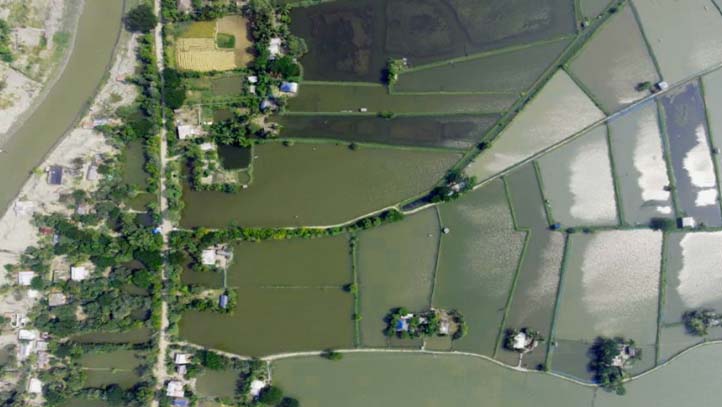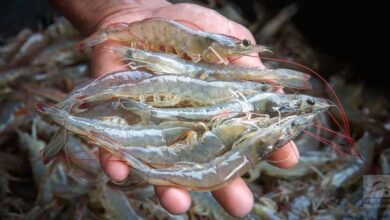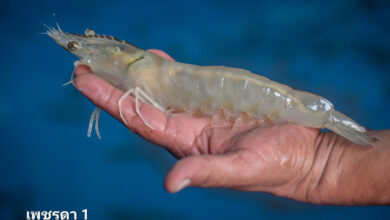
The black tiger is referred to “poor farmer’s shrimp”. It is less expensive for farming and has lower disease rates than Vannamei shrimp. Although its stocking densities are lower than white-leg shrimp, the survival rates are good.
Vannamei or white-leg shrimp is the most popular species in the world for farming right at this moment. It has a high production rate as it can stock in high density and grows faster with supplementary feed. But Vannamei shrimp has its downside as well.
It is more disease prone and costly for farming. Feed and aeration required extra money for farmers. Moreover, recent oil price hike and rise of feed price creates more burden on farmers. So, the Asian shrimp industry is observing a shift back to Black Tiger farming in recent days. .
According to Willem Van der Pijl, the founder of consultancy entity “Shrimp Insights” and the managing director of the “GSF Foundation”; the increased competition, lower selling prices, and higher production expenses have made Vannamei farming more challenging in the Asian countries.
In this context, only major companies who have the resources to invest in the latest technology and equipment for their farming operations can thrive in the market. Vannamei production may no longer be practical for a significant number of the remaining farmers. Mostly are small-scale cultivators and have very little capital.
“Instead of abandoning shrimp farming altogether, these farmers consider rearing black tiger shrimp instead,” he added.
Moreover, recent reports from India illustrated the poor condition of shrimp farmers. Many farmers in Gujarat, Andhra Pradesh, Odisha and West Bengal are probably going to start producing black tiger shrimp instead of Vannamei. Particularly those who have had trouble with the recent increase in the operational costs of Vannamei production.
Black tiger shrimp output showed huge potential as it increased globally from 382,000 metric tons (MT) in 2019 to 546,000 MT in 2021. Vietnam is the world’s top producer of black tiger shrimp. Followed by Bangladesh, Indonesia, India, China, and other, smaller producers like the Philippines, Myanmar and Madagascar.
Vietnam exported $687 million worth of black tiger shrimp in 2019, primarily to China and Japan. About $375 million worth of black tiger shrimp was exported from Bangladesh in 2019. Even though the quantity of raw materials has decreased over the past few years, Bangladesh is still one of the top exporters of black tiger shrimp globally. In contrast to Vietnam, Bangladesh sells the majority of its shrimp to Europe. Indonesia exported around $335 million worth of black tiger shrimp, mostly to japan.
Numerous experts anticipate a rebirth of the black tiger shrimp farming sector. Some farmers in countries such as India will likely begin stocking multiple ponds with black tiger shrimp out of concern for the price levels and surplus of Vannamei. Improvements in the genetics of black tiger shrimp have increased disease resistance and enhanced growth, which would promote this revival. As a specialized product, black tiger shrimp continues to satisfy the preferences of a large segment of chefs and consumers.
However, Bangladesh’s perspective differs significantly from that of other Asian nations. Four hatcheries of Bangladesh including, MK Hatchery in Ukhia of Cox’s Bazar, Dafa Feed and Agro Products Ltd under Karnaphuli in Chittagong, Niribili Hatchery in the Kalatali area of Cox’s Bazar, and Midway Scientific Fisheries Ltd in Khurushkul of Cox’s Bazar has successfully completed the trial farming of Vannamei shrimp. The harvesting program demonstrated the project’s success. According to the DoF official the Vannamei shrimp commercial farming will begin from this season starting from March.
But the local farmers have not yet cultivated Vannamei Shrimp on a massive scale despite its enormous potential. Therefore, the black tiger shrimp is Bangladesh’s current best hope for generating revenue. Since the 2013-2014 fiscal year, Bangladesh’s fisheries exports have experienced a gradual decline, with a precipitous drop in exports that has continued until FY’21. From $530 million in the fiscal year 2013-14, Bangladesh’s exports decreased to $328 million in the fiscal year 2020-21.
Global Seafood Alliance (GSA) President Dr. George Chamberlain indicated the reason for Bangladesh’s production decline could be attributed to its inherent production inefficiency.
As the revival of black tiger shrimp is underway in Asia, it might also help Bangladesh to bring back the golden age of shrimp and revive this industry.
Jaber Bin Abdul Bari
Dept. of Fisheries and Marine Science, NSTU




